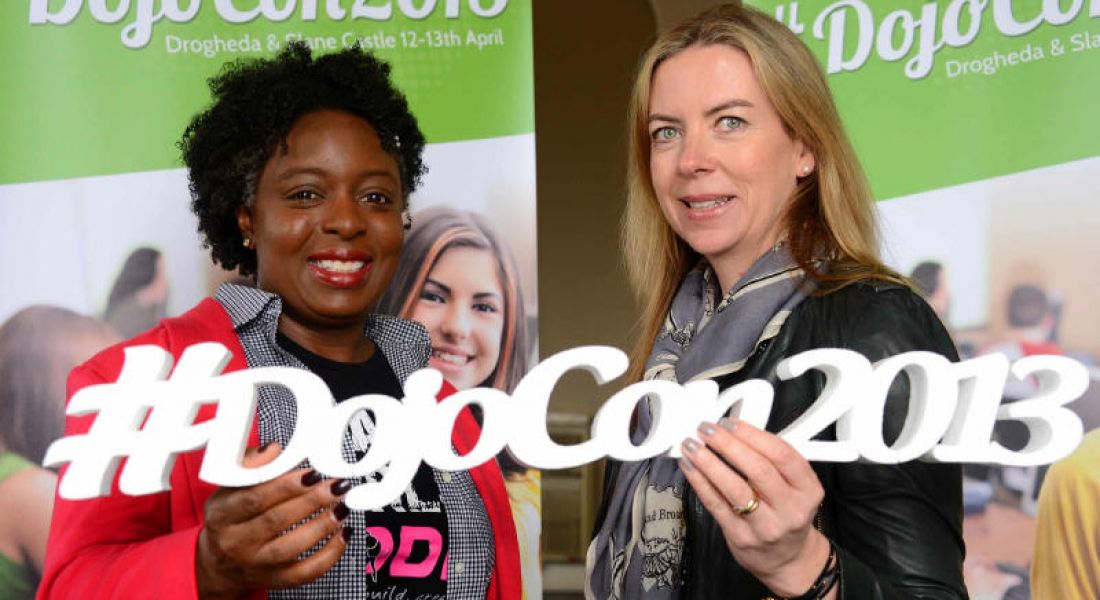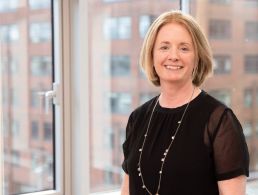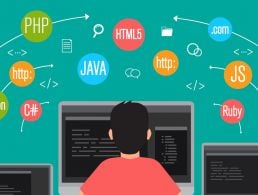Normally, Slane Castle in Co Meath is associated with the deifying of rock royalty, like U2 or the Rolling Stones. But on a sunny April Saturday morning the talk was of a different breed of rock star who will resonate more profoundly in this century – the coder.
This was a gathering of the voluntary mentors who are intrinsic to the two-year-old CoderDojo movement, which James Whelton, a then-teenager from Cork, kickstarted to teach kids how to write software. The movement has since grown to see more than 16,000 kids in 26 countries gather to learn to how to write software on any given Saturday.
These rock stars of code had, of course, their origins in the Seventies, with people like Microsoft’s Bill Gates and Apple’s Steve Wozniak leading the charge.
More recently, there are individuals like Facebook CEO Mark Zuckerberg and Nick D’Aloisio, the 17-year-old who sold his company to Yahoo! for US$18m in recent weeks.
Gates and Zuckerberg may only reinforce the notion of the coder being a geeky and socially awkward male. Some parents wouldn’t consider that their daughters could actually be coders, too. In fact, some believe encouraging them to learn how to write software could transform the socio-economic fabric of the world.
In recent weeks, Sheryl Sandberg, chief operating officer of Facebook and author of Lean In: Women, Work and the Will to Lead, told an audience in Pennsylvania: “A lot of kids code because they play games. Give your daughters computer games. Ask them to play them.” Giving kids this early start in computer science will pay off for the economy in the long run, Sandberg said.
This sentiment was echoed at the CoderDojo gathering at Slane Castle on 13 April by some of the leading exponents of the movement to get more girls to code.
Among the community of ardent mentors is Una Fox, Disney technology VP, who established a CoderDojo in LA.
“Nobody teaches coding in schools in Ireland or the US and I’m sure it’s the same in many countries around the world,” Fox said.
“But it’s amazing when you see the light in the kids’ eyes when they work on a computer and find out that they can make an object move and how excited they are about that. It’s amazing to see how much they can do after just one hour of instruction and how creative they can be.”
CoderDojo state-side
Rebecca Garcia, a vibrant 22-year-old resident of Manhattan, co-founded the first CoderDojo in New York City.
“I started coding when I was 10 and my sister, after realising I had an interest in computers, paid for me to go to a computer camp at MIT and that changed everything for me,” Garcia said.
“I realised that there were other kids my age who were building and creating all these great things and it eventually inspired me to go back to teach at MIT before I went to college.”
When Garcia went to live and work in New York she discovered that not all kids were lucky enough to be able to join a computer camp during their summer holidays.
“I found out about CoderDojo through an article online and when I tweeted James (Whelton) about it he said ‘why don’t you just start one in New York’, and so we did.”
Garcia said she believes that teaching young people to write code will provide them with the skills to converse in what will be the business language of the 21st century.
Teaching kids coding not only provides them with the analytical thought processes for software creation but the ability to explore and see what other jobs are out there, Garcia said.
“When I was young I thought coding was just something for engineers in dusty labs doing hard maths, but I realised that there are a lot of creative paths that you can take and for kids to be exposed to that very early is fantastic,” Garcia said.
“In New York we have the ability to reach out to kids in underprivileged areas and to expand their horizons and bring them along.”
Garcia added that she hopes to not only help grow her CoderDojo girls initiative but get more female mentors involved and grow the CoderDojo movement in the US.
“I think it is really important not only for more girls and women to be involved as role models but also to banish the stereotype of coding being a male-only activity. Getting the girls to learn how to create things in a fun, collaborative environment and have them come to the dojos more regularly will be key,” she said.
Black Girls Code
On the other side of the US, in San Francisco, California, Kimberly Bryant, an engineer, recognised that software had been creating new economies. Girls, in particular, were in danger of being left out, however.
Bryant founded Black Girls Code in 2011 to meet the needs of young black women who were underrepresented in the technology world, focusing on girls between the ages of 7 and 14. The movement is now active in seven US cities, as well as Johannesburg, South Africa. Every month, 1,000 girls learn the lingua franca of the 21st century.
“I founded Black Girls Code from my desire as a mother to find opportunities for my 12-year-old at the time to learn about computer programming and to make something rather than just playing video games,” Bryant said.
“I was looking for opportunities for her to grow and find out what her own interests and passions were around technology.”
Bryant said she found the technology industry really wasn’t as inclusive as she thought it should be, and she wanted to do something about that, too.
The socio-economic opportunities that will stem from teaching girls to code are immense, she said.
“It offers a tremendous amount of power to change the face not just of technology but really the future of the whole world in giving the next generation and future leaders these skill sets which will take them beyond what we can even imagine in the 21st century.”
Bryant said teaching girls to code has important implications for the girls’ own personal development.
“We find that the girls’ self-confidence goes from a two or three in terms of their ability to learn on their own and self-direct to a 10 or a 12; they become mini-leaders among their peers and they are sought out for ideas or to answer questions.”
She said teaching kids how to write code does not necessarily mean they will end up in technology careers.
“We have no grand ideas that everyone is going to be the next Mark Zuckerberg, but someone might. Even if they don’t they will have a valuable skill set in their pockets that can help them to be successful in their futures, whether they do medicine or marketing.
“One of my students, a shy but bright kid, has been selected by her school to teach and shape the school’s coding curriculum and they are going to pay her. Just seeing her have these opportunities is what makes the difference,” she said.
Coding across Ireland
In Ireland, fostering girls’ interest in coding is already under way in a number of cities, including Limerick, Waterford and Dublin. Karen O’Connell, mother of three and a former Dell worker, helps run CoderDojo Divas in Limerick, which encourages girls between the ages of 12 and 17 to learn how to write code.
“The aim is to encourage the girls to take part in the normal CoderDojo but first of all they need to overcome perceptions that technology is a men-only industry. It’s not. It’s important that men and boys realise that, too.”
O’Connell said there’s a critical economic need to get girls interested in technology.
“If you think about it, we need to realise that there are only so many men who are interested in technology, just like in any sphere of life. And the same is true for girls, there will only be so many who will be interested in art or music, or nursing or teaching.”
O’Connell said this isn’t about turning everybody into a programmer. At this stage, coding is on its way to becoming a critical life skill and everybody is going to have to have an understanding of technology, no matter what their career is, she said.
In Cork, a new organisation, Cork Does the Math, will be holding technology events in girls’ national and secondary schools on 25 April, Girls in ICT Day. Various entrepreneurs and coders will show the girls how they create apps and games.
One of the organisers of Cork Does the Math, Grainne Bagnall of IT recruitment firm Claran Consultants, said there needs to be greater exposure to science and technology in Irish schools.
“If you do a random poll of students’ career choices in secondary schools in Ireland today you’ll find that teaching and nursing are the top choices. These are the very careers under pressure in the economy today.
“Our research has shown that in schools girls are just getting access to science education about one hour a week on average in Ireland, yet they get 50 minutes for roll call and two and a half hours for religion?”
Bagnall said the key is to show girls that careers in ICT are available to them but also that coding skills can benefit their lives in other career paths, too.
She said there were bright spots and cited the Blackrock Conservatory CoderDojo in Cork as boasting one of the highest proportion of girls participating.
“More girls are getting interested in science, technology and coding and we need to encourage this.” As the technology industry continues to bemoan the shortage of programmers in Ireland, it is a growing movement that could make a difference.
A version of this article appeared in the Sunday Times on 21 April
Women Invent Tomorrow is Silicon Republic’s year-long campaign to champion the role of women in science, technology, engineering and maths




